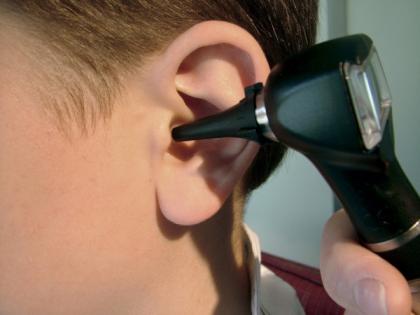Your child has an earache. You are worried it is an ear infection. You make an appointment to see the doctor because he needs antibiotics, right? Maybe not.
There is a real problem of antibiotic overuse in most developed nations and because we’re overusing them, many bacteria are getting smarter and stronger.
The thing is, ear infections don’t necessarily need antibiotics. Many are caused by viruses. Many will get better by themselves and, as well as risk of overuse, antibiotics can have side effects.
Here is what your GP should do when you bring your child in with an earache.
1. Check to see if it’s really an infection. Not only can the common cold or tooth problems cause earaches, you can also get pain from having fluid in the middle ear, something called ‘otitis media with effusion’ (OME). OME can look like an infection, but it’s not – so it doesn’t need antibiotics. Your doctor is supposed to look for the signs of a true infection: ear pain that comes on suddenly and persists, and an eardrum that is full or bulging with pus behind it, one that doesn’t move when you blow air into it – or an eardrum that is draining pus.
2. Ask about and treat pain. This sounds obvious, but sometimes we doctors get so caught up in diagnosis that we forget to really talk about pain, and it’s pain that brings parents in the first place. Whether or not there is an infection that needs antibiotics, there is an earache that needs soothing, so your doctor should be talking to you about how you can help your child’s pain.
3. If there really is an infection, figure out if it’s severe. It might sound obvious but it’s important for deciding if antibiotics are needed. A severe infection is one where there is a lot of pain, the child seems ill, or there is a fever of 39 degrees Celsius or higher.
4. Decide if antibiotics are necessary. As a guide, here is who should definitely get antibiotics:
- Anybody with a severe infection
- Anybody with other health problems that put them at risk of complications
- Children under 6 months old
- Children 6-23 months who have infections in both ears
5. Wait and watch for 48-72 hours. I do this a lot. I give parents a prescription, but I tell them not to fill it unless the child either gets worse or doesn’t get better in 2-3 days. In my experience, most don’t need to fill the prescription. Pain medication and some patience very often do the trick.
To make this work, parents need to understand exactly what they are looking for, need to be able to get the prescription if needed, need to be able to reach the doctor easily if they have any questions, and the doctor needs to be able to reach them easily to check on the child. Sometimes, to be on the safe side, we need to just go ahead and give antibiotics. But when we can wait, we should wait.
6. If an antibiotic is prescribed, it should be amoxicillin. To fight antibiotic resistance, it’s important to use just the right antibiotic –t he one that will kill only the bacteria likely to cause the infection. For ear infections, that’s amoxicillin, unless the child’s allergic, just had amoxicillin in the past month (which might mean amoxicillin isn’t strong enough), has conjunctivitis too (which can be a sign of bacteria that amoxicillin doesn’t kill), or doesn’t get better in 48-72 hours. The guidelines tell doctors what to do in those situations.
I also get asked a lot how to prevent ear infections in the first place. The key recommendations are:
- immunising kids against flu
- keeping them away from tobacco smoke, and
- breastfeeding for the first six months of life (it may be too late for some of you with this one!)
Next time your child has an earache, check to see if your doctor does these things. If not, ask why. But most importantly, if your doctor suggests waiting instead of giving antibiotics, please don’t freak out. It may really be the better choice.
* * *
This article first appeared at, and is republished here courtesy of, Boston.com


















__small.png)










